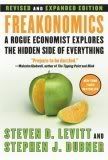Prosper has released their February lending market survey, and, once again, my great enjoyment is perusing Chris Larsen's take on the marketplace:
In February 2008, the percentage of prime loans funded on Prosper once again hit record levels, accounting for 43% of originations. At the same time, the percentage of prime listings on Prosper hit an all time high of just over 18% – a big jump from 9% in February 2007 and the previous high of 12% in December 2007 – while the percentage of sub prime listings hit an all time low of 33% and accounted for a mere 6% of funded loans.
Some other key metrics we watch closely include the type of listings that are created and funded in the Prosper marketplace. Very broadly, we look at listings that, based on historical Prosper loan performance data, can be made at an attractive risk-return tradeoff and those that can only be made at an unattractive risk-return tradeoff. By providing more robust information to lenders on the expected returns of listings, we have seen an increase in originations from attractive risk-return listings of over 200% and a decrease in originations from unattractive risk-return listings of 80% over the course of the last year.
As we discussed at our Prosper Days community conference, these dramatic and constructive shifts in the marketplace have been driven by three key factors: the pervasive credit crunch and sub prime mortgage meltdown; recently introduced performance data-driven tools and features; and, increasing mainstream acceptance of Prosper as an attractive funding source and asset class.
In other words, Chris Larsen is pulling an anti-
Rodney Dangerfield. He thinks that Prosper is getting respect and becoming a viable alternative to banks. He also mentions that Prosper is gaining acceptance as an asset class, but this is not Prosper's primary problem -
Prosper needs good borrowers.
Also of note what looks like solid indicators that the average loan rate has very poor correlation with the Fed Funds Rate. Chris was big on this concept back in
September and
October. The summary notes that the average "Prime" borrower rate was 10.32% in February 2008 while it was 9.23% in February 2007. Of course, the Fed Funds rate was 5.25% in February 2007 and it's floating around 3.0% now (
get ready for that to change). The irony of this is that the falling Fed Funds rate will decrease Prosper's competitiveness. Banks tend to index their personal loan rates to something that derives off of the Fed Funds rate. If Prosper lenders do not follow suit, Prosper's loan rates will not drop to match the banks. Quite the
sticky wicket.






